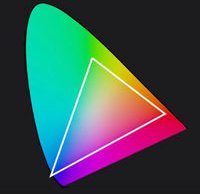Color spaces explained: Ensure your colors look great on all devices by selecting the right color profile
posted Tuesday, December 11, 2018 at 2:00 PM EDT

Have you ever uploaded one of your images to the internet or had it printed and wondered why the colors looked completely different than they did on your display when you were working on the image? In many cases, this is due to an issue with color spaces and profiles. With a basic understanding of color spaces and how they work inside of Adobe Lightroom and Photoshop, you can avoid this issue in the future. The color space explanation video below comes to us from Aaron Nace of Phlearn and it breaks down the differences between LAB, Adobe RGB (1998), ProPhoto RGB and sRGB color spaces and offers advice on how to choose your color space for editing and exporting.
Scientists estimate that the human eye can see between 2 and 8 million different colors. All the colors the human eye can see can be translated into a digital color space, LAB, which translates colors into lightness values, green-red values and blue-yellow values. Within this all-encompassing color model, color spaces exist, such as Adobe RGB (1998), sRGB and ProPhoto RGB. Each of these color spaces are contained within the full range of colors and display different ranges of colors, with sRGB displaying the fewest and ProPhoto the most. Issues with colors looking incorrect when you upload or print often are the result of exporting in a wide color space and then trying to display an image on a platform which uses sRGB, such as an internet browser or online printing service.
If sRGB is the smallest common color space, then why do internet browsers use it? Different devices have limitations. For example, few computer monitors display 100 percent of the Adobe RGB (1998) color space. Even monitors specifically designed for photo editing sometimes show only 98 or 99 percent of the color space. If you want an image to be displayed consistently across devices, it must be in a color space all devices can display, which is sRGB. If you want to share an image on the internet, then, you should always export your photo with the sRGB color space. By exporting your image with an sRGB color profile, you will ensure that your image looks consistent across all devices.
While sRGB can be displayed by all devices and is the best choice for exporting for web use, this does not mean that you should edit your images in the sRGB color space. When editing a photo, specifically a raw image, which does not have a color profile assigned at the time of capture, you should preserve as much data and information as possible. At this time, that means using ProPhoto RGB. You can always convert more data into less data when you are exporting a finished photo, but you can never add color information back in later. If you are working with a very saturated image, this is particularly important.
(Via Phlearn)